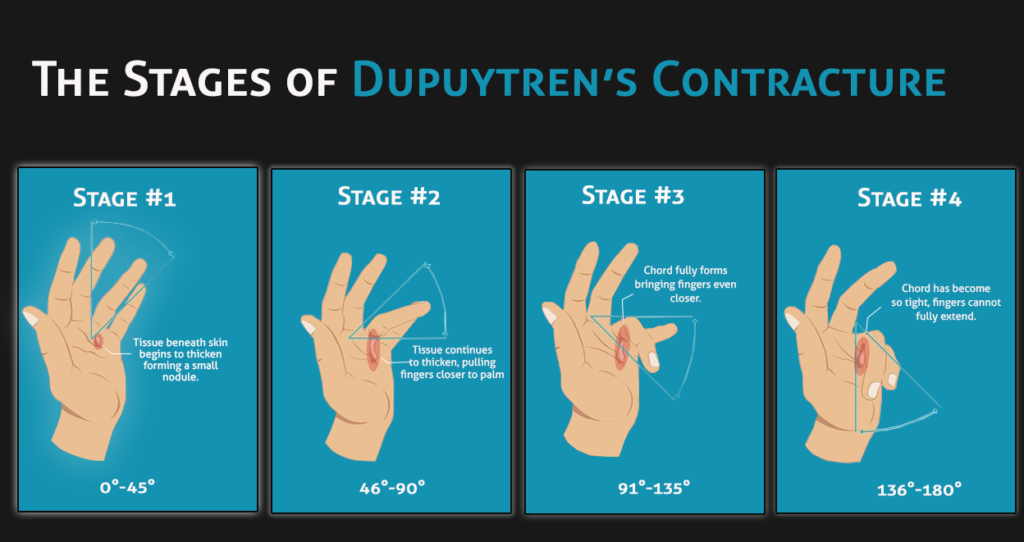
August 28, 2020 at 7:44 pm · drsahai · 0 comments
Treating Dupuytren’s Contracture
Dupuytren’s contracture causes the fibrous tissue in your hand to thicken. Therefore, tightening and affecting your fingers. They become stiff, bend, and lose flexibility. However, as the disease progresses, Dupuytren’s contracture treatment is necessary.
There are surgical and non-surgical methods to try. Treatment will depend on the severity of the condition. The goal is to reduce symptoms and improve mobility. Unfortunately, there is no treatment to stop it from worsening.

For some, disability occurs slower than others. At most, it can be a slight lumpiness of the hand. In any case, the doctors will typically wait to see how it progresses. It may remain mild and not impact your daily life. On the other hand, other cases are more progressive. Your doctor will discuss your treatment options. This will depend on the stage of the condition and pattern.
Non-surgical Dupuytren’s Contracture Treatment Options
It’s common for a doctor to bring up these treatment methods in earlier states. They can also be prescribed in conjunction with surgery. Only a few non-surgical methods are effective.
Stretching: This can be beneficial for very mild forms. Your doctor will advise on the stretching to do. This is one of a handful of methods that work best together.
Radiation therapy: Low energy radiation therapy is also helpful. It can help reduce symptoms. It can also prevent the nodules and cords from getting worse.
Steroid injections. Anti-inflammatory medications are first injected into the Dupuytren’s nodule. The size of the nodule and symptoms will diminish early on. Multiple injections usually are necessary. However, in later stages, the steroid may not help at all. This method can help slow progression. But, it will not straighten fingers that are already bent.
Enzyme injections. This is best for when your fingers are already in contracture. Xiaflex is a mixture of enzymes injected into the nodule. This loosens the tissue. Therefore, helping your doctor to straighten the fingers. It is also common for your doctor to prescribe stretching after the injections.
Those needing injections often require multiple. It can take up to three before the fingers can straighten. Possible side effects can include bruising and bleeding at the site. In rare cases, nerve or tendon damage can occur.
Surgical Treatment Options
When it becomes difficult to perform daily tasks, surgery is necessary. The goal will be to restore motion in your fingers. Possible surgical options include:
Open Surgery. The doctor will first make an incision. And then remove the thicker tissue. The division is called a fasciotomy, and removal is called a fasciectomy. Next, a skin graft is made to close the wound. You will likely need physical therapy after healing. This method requires a large incision. Therefore, it will take longer than minimally invasive procedures.
Needle Aponeurotomy. This is an alternative to open surgery. The procedure is done with a hypodermic needle, and the diseased tissue is divided. This is less invasive and has a quicker recovery. You may not need physical therapy after this.
After surgery, your hand function may be restored. In most cases, though, it can correct the contracture. It is important to remember that treatment cannot prevent contracture from recurring. In fact, it’s designed to restore function and reduce symptoms. Discuss your treatment options and outcomes with your doctor.
If you are experiencing Dupuytren’s contracture, or suspect it, then call us at 888-409-8006. Our top hand specialist is here to help! We have offices located throughout South Florida.
Tags: Dupuytren’s Contracture, hand pain Categories: Hand











